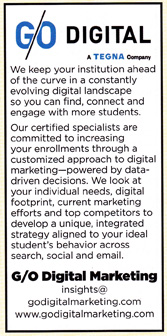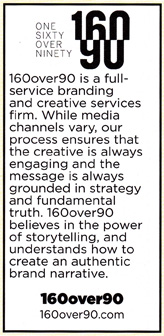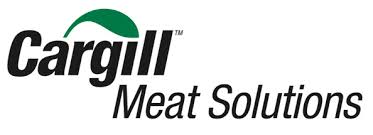The November/December issue of American Marketing Association’s Marketing News includes a directory of higher education marketing providers. The 14-page gallery of “about us” blurbs is a window on the state of writing in corporate America.
The editor in me immediately started to judge the quality of each. The blurbs that follow provide a few highlights and lowlights that I hope will show you how to separate yourself from the crowd.
160over90
The first listing in the directory is a great model of clearly communicating what this agency does. It kicks right off with “a full-service branding and creative services firm.” No unnecessary and superfluous adjectives here, just a little 50-word teaser that gives you a taste of what they stand for.
Adobe

Wouldn’t you think this source of so many great products would feature great writing too? On the contrary, it slops a bland coat of beige over the great brand, including the hackneyed “global leader in digital marketing and digital media solutions.” More words like tools, groundbreaking, and optimize continue to turn this into a generic description, rather than one that differentiates. Adobe should be better than that.
Converge

A typical laundry-list blurb, including listing all office locations in the first sentence. It would seem Converge must lead with the locations to tell potential customers they serve companies in only those cities, right? Or maybe they don’t have a website where readers can find that out on their own. In reality, I doubt the first statement is true and I see a website address right there in print. So why make the reader wade through all that before even beginning to say what you can do for them?
Emma

Emma is an email service provider that has built a great brand. Their blurb almost gets it, leading with the concrete statement that 50,000 organizations use it to “get more from their email marketing.” Clear, credible – that’s good. But the next sentence begins the “almost” part. How about this change to shine the light back on the customer:
Marketing teams of all sizes can do their best work through our tailored university, business, franchise, and agency editions for an intuitive, enjoyable experience.
Fewer words, less hammering us with the brand name, and sifting out the clunky words, like “capabilities” and “platform.”
Oh…and “Visit myemma.com to learn more” are wasted words when the web URL immediately follows.
G/O Digital

Of 82 blurbs in this directory, 68 of them start right off repeating the name of the company, even though the company name/logo appears at the top of every listing. Why do that? Especially when you have limited words.
This company is one of the few to get it right in a few ways:
- Never uses the company name, instead using the conversational and friendly “we” and “our” when referring to the company.
- Quickly focuses on you and “your institution.”
- A great description of things they do and how those things will help you.
Congrats G/O Digital!
Salesforce
It still surprises me that large enterprises can’t find better writers and, I guess even more surprising, they don’t know what good writing is. Yet here’s another example. For one, “Salesforce” is the first word in all three main sentences in this description. The first sentence includes the brand name twice in only 17 words, to be sure you don’t miss it. Overusing the name sets a barrier between you and the reader. You become the impersonal “company” and they become the dutifully-listening customer as you tell them what they need. Where’s the one-to-one dialog in that? It’s the me-me-me school of writing. Kind of like going on and on about yourself on a first date. Not a good strategy.
And again, the wasted reference to the website in the last sentence.
Don’t follow the crowd: Sound Different
Apple gave us “Think Different.” I am the champion of “Sound Different.” Differentiation is what you want in all communication to your target audiences. Otherwise those audiences will not be able to gain any foothold in their quest to decide if you are different from your competitors.
You can see from these examples that there are wide open spaces for you to stand out from the same old writing style that everyone else uses. Most companies seem determined to stick to the old way. Use that to your advantage.
When you have a unique voice, you make your potential customer’s job easier. You can move more quickly to showing them the value you alone can provide. And you can compete on that value, rather than being seen as a commodity that need only be judged on price.



